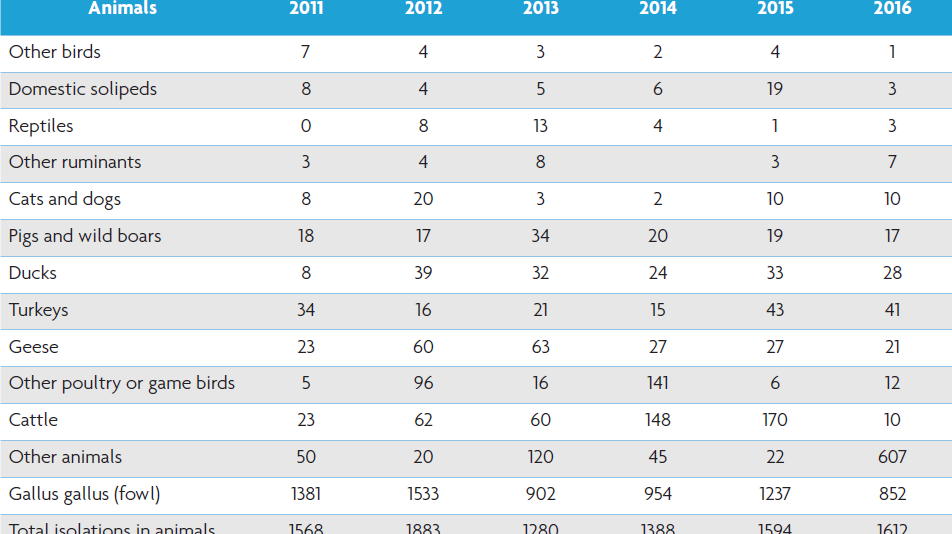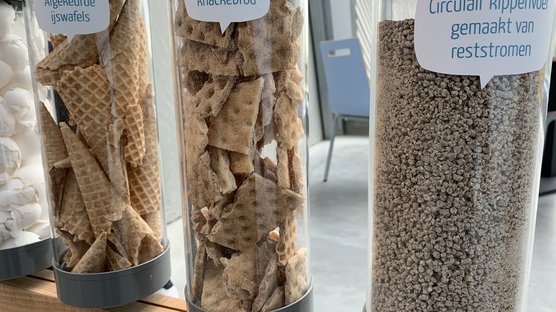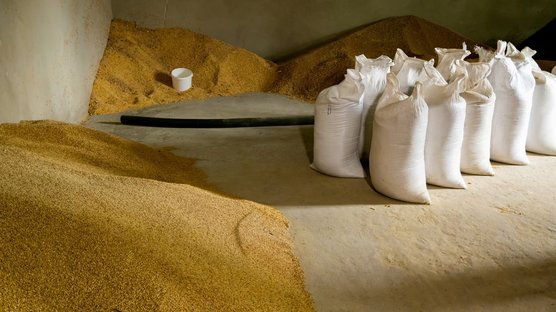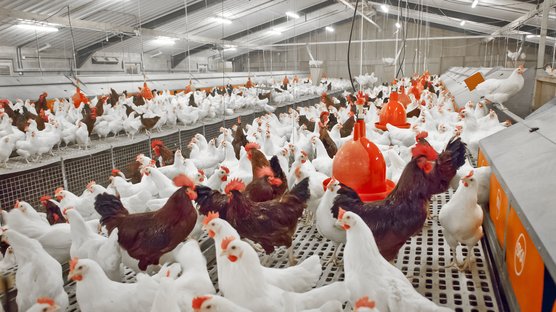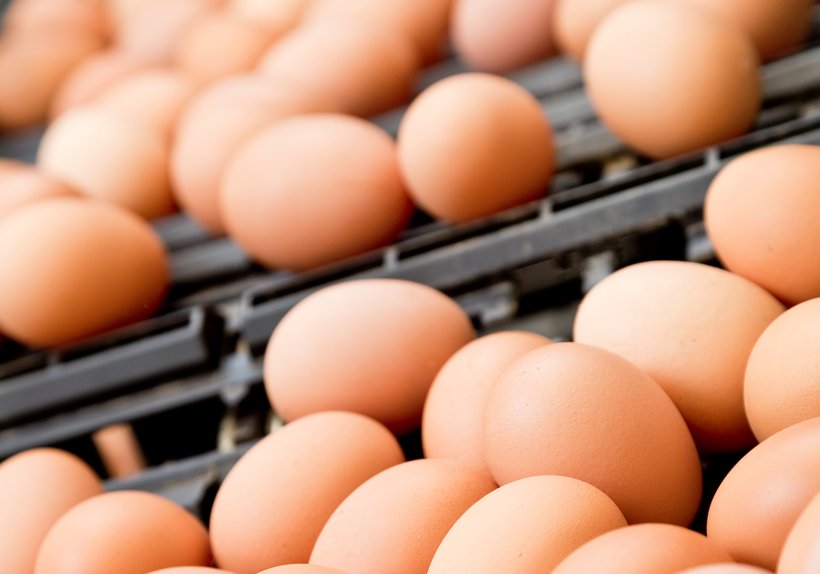
Published on Sept. 20, 2019
The importance of preventing salmonella in laying hens
Salmonellosis belongs to the most important foodborne zoonoses throughout the world. According to the European Food Safety Authority (EFSA), each year over 90,000 salmonellosis cases are reported in the European Union. While for the United States, the CDC (Centers for Disease Control and Prevention) estimates that about 1.2 million illnesses and 450 deaths occur every year.
The CDC estimated that food is the source for about one million illnesses in the USA. For Europe, a significant decreasing trend of salmonellosis has been observed between 2008 and 2016. However, the recent Salmonella enteritidis outbreaks contributed to a change in this decreasing trend in both humans and poultry.
What is salmonella?
Salmonella is a bacterium that can cause an illness called salmonellosis in humans. Salmonella is commonly found in the intestines of healthy birds and mammals. In humans, the risk of a salmonella infection is associated with the consumption of contaminated food.
The food categories posing the greatest hazard to public health include raw meat and raw meat products, unpasteurised milk products, eggs and products containing raw eggs, sprouted seeds and fish products. The main symptoms of salmonellosis include fever, diarrhoea and abdominal cramps. In most of the cases people infected with salmonella do recover, unfortunately in less than 0.1 % of the cases it can result in death.
Salmonella and its relation to poultry
The 1999 report from Steinback and Hartung revealed that approximately 60-65% of human infections were caused by salmonella arising from poultry, eggs and egg products. Their research also showed that this was nearly exclusively linked to Salmonella enteritidis. S. enteritidis is markedly associated with laying hens, broilers and broiler meat (Fig. 1 & Table 1).
The European Union summary report on trends and sources of zoonoses, zoonotic agents and foodborne outbreaks in 2016 reveals that in 2016, 1.47% of the EU breeding flocks were tested salmonella positive (versus 1.42% in 2015) and 3.71% of adult laying hens flocks were tested positive (versus 2.67% in 2015). S. enteritidis seems to play a dominating role in the European salmonellosis; in 48.5% of all the cases, isolates that belong to S. enteritidis were reported and it is mostly associated with the consumption of eggs, egg products and meat.
When looking at poultry, S. enteritidis was found in 59% of the cases. The second most detected serovar, S. infantis, was found in less than 10% of the cases, and S. typhimurium was found in around 5% of the cases, and the other serovars reached percentages between 1.5% and 4.4%.
How to control salmonella in your birds?
When you look at the above numbers, you can clearly see that there is a strong need to control salmonella in your birds. For poultry producers, the first aim is to prevent the salmonella bacteria from entering their operations.
When present, the aim is to prevent salmonella from entering the food chain via the eggs or the meat they produce. The only successful control of Salmonella infection in your birds starts at the hatchery and farm level!
Strict sanitary measures need to be taken so that hatching eggs, day-old chicks, feed, water, litter, the barns or rodents are not the source of a salmonella infection. Environmental sampling has been proven to be a highly effective tool in detecting salmonella and to be used for the verification of your cleaning and disinfection.
It is highly recommended that you have a proper working biosecurity program in place, one that has been adjusted to the environmental, regional and organisational conditions of your operations.
A well-defined and structured biosecurity plan is needed so that the daily routines are steered in a comprehensive way.
Often biosecurity is considered an additional expense, but we, as a breeding organisation, are more than able to see that it pays off fully! Not only for the general health of your birds, but also for the health and, especially in the case of salmonella, the safety of the consumers.
Below we list the most important strategies that should be implemented to prevent the spread of salmonella.
Hygiene and disinfection
This is the most obvious strategy, but easy to miss. All buildings and equipment must be cleaned and disinfected before the new flock arrives. The effectiveness of cleaning and disinfection should be checked via environmental sampling. Intensive cleaning and disinfection are needed when the previous flock is found to be salmonella positive! The aim of cleaning and disinfection is to cut the circulating infection chain after depopulation of the farms if you make use of the ‘all-in, all-out’ principle.
A well-managed barrier system around the hatcheries and barn houses should also involve proper cleaning and disinfection steps to prevent possible introduction of salmonella from outside via vehicles, farm visitors, boots, etc.
Feed and water
It is known that feed can be an important source of contamination with salmonella. Grains and animal meal are common sources of feed contamination, as well as environmental dust. Pelletising feedstuffs, or heat treating the feed will destroy almost all bacteria present in feed, but there is always the chance of recontamination.
Recontamination of the feed can occur in the cooling environment, via the transport trucks, or simply via dust and insects present in and around the feed mills. However, pelletised feed or heat-treated feed is not available or used everywhere as it is more expensive.
It often pays to have insight into the audit-reports of your feed supplier. Water hygiene, especially for the drinking water, is very important as part of the biosecurity program. Monitoring the drinking water quality is as important as purchasing safe feed.
People
Hatchery and farm workers are a key factor in an effective biosecurity program. It is of major importance that they know and meet all the biosecurity standards and rules; it pays off if you can fully explain the ‘Why’? behind your biosecurity program. Make sure that they know and respect the rules regarding the shower-in procedures, the cleaning and disinfection of their hands after every toilet visit and contact with food. They must also follow the rules with respect to changing clothes and footwear between barns as well as respect the rule of 72 hours free of contact with domestic birds before entering the premises.
Pest control
As all animals, including reptiles and insects, can carry salmonella, it is important to keep them out of your poultry houses and hatcheries. The litter beetle is particularly known to be a common host for salmonellas.
Disinfection should therefore be executed immediately after depopulation of a house to prevent the litter beetles from migration and hiding. Besides cleaning and disinfection, it is important that you have measures installed to prevent rodents and wild birds from entering your barns. Having bait stations outside the poultry barns could be one of these measures.
Vaccination
There is an increased interest in vaccinating poultry against S. enteritidis and S. typhimurium. With vaccination, the bird’s resistance to a possible infection of salmonella will be further increased. The birds’ natural resistance/first barrier against a possible salmonella infection is via their well-developed intestinal flora. Young birds are therefore most susceptible to an infection of salmonella as it takes time before the intestinal flora is fully developed. In general, the aim of vaccination for salmonella infections is the prevention or reduction of intestinal colonisation.
This will lead to reduced faecal shedding, and as a result, less egg shell contamination. Besides, diminished colonisation of the liver, the spleen and the reproductive tissues with salmonella is a result of the induced response by the adaptive immune system, leading to a reduced presence of salmonella in eggs. Always consult your local veterinarian for advice on the best strategy for your operations that comply with the local legislation.
It is known that Salmonella enteritidis can persist in a vaccinated flock of laying hens, but a vaccination program can be used as an additional tool to lower the presence of S. enteritidis in eggs.
In combination with the above-mentioned strategies you can reduce the chance of an infestation with salmonella drastically. Vaccination against salmonella is useless when the birds are kept in an environment where there are no proper biosecurity measures taken.
Breeding
General health and disease resistance are key traits of our breeding programs. Via the Feed4Food program, Hendrix Genetics is working together with universities, feed companies and animal medicine companies on understanding more about the birds’ gut health and microbiota. This research will hopefully lead to better insights in managing a flock in a healthy and sustainable way. With our intensive health control programs (weekly monitoring of the health status of the birds and their environment) combined with all the measurements that we take to maintain our high level of biosecurity, we keep the Hendrix Genetics’ breeding stock salmonella free. n

